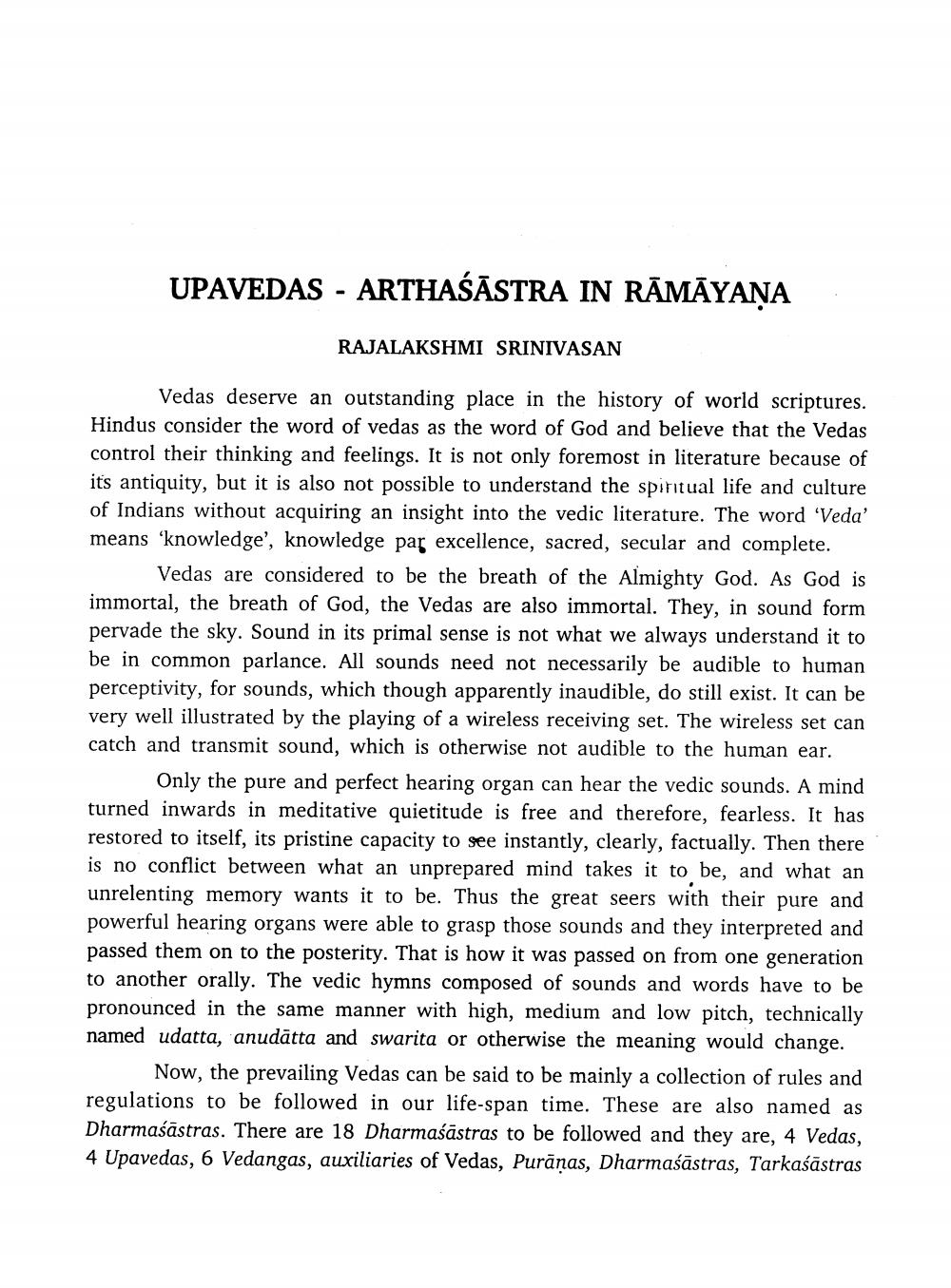________________
UPAVEDAS - ARTHAŚĀSTRA IN RĀMĀYANA
RAJALAKSHMI SRINIVASAN
Vedas deserve an outstanding place in the history of world scriptures. Hindus consider the word of vedas as the word of God and believe that the Vedas control their thinking and feelings. It is not only foremost in literature because of its antiquity, but it is also not possible to understand the spiritual life and culture of Indians without acquiring an insight into the vedic literature. The word 'Veda' means 'knowledge', knowledge par excellence, sacred, secular and complete.
Vedas are considered to be the breath of the Almighty God. As God is immortal, the breath of God, the Vedas are also immortal. They, in sound form pervade the sky. Sound in its primal sense is not what we always understand it to be in common parlance. All sounds need not necessarily be audible to human perceptivity, for sounds, which though apparently inaudible, do still exist. It can be very well illustrated by the playing of a wireless receiving set. The wireless set can catch and transmit sound, which is otherwise not audible to the human ear.
Only the pure and perfect hearing organ can hear the vedic sounds. A mind turned inwards in meditative quietitude is free and therefore, fearless. It has restored to itself, its pristine capacity to see instantly, clearly, factually. Then there is no conflict between what an unprepared mind takes it to be, and what an unrelenting memory wants it to be. Thus the great seers with their pure and powerful hearing organs were able to grasp those sounds and they interpreted and passed them on to the posterity. That is how it was passed on from one generation to another orally. The vedic hymns composed of sounds and words have to be pronounced in the same manner with high, medium and low pitch, technically named udatta, anudātta and swarita or otherwise the meaning would change.
Now, the prevailing Vedas can be said to be mainly a collection of rules and regulations to be followed in our life-span time. These are also named as Dharmaśāstras. There are 18 Dharmaśāstras to be followed and they are, 4 Vedas, 4 Upavedas, 6 Vedangas, auxiliaries of Vedas, Purānas, Dharmaśāstras, Tarkaśāstras




